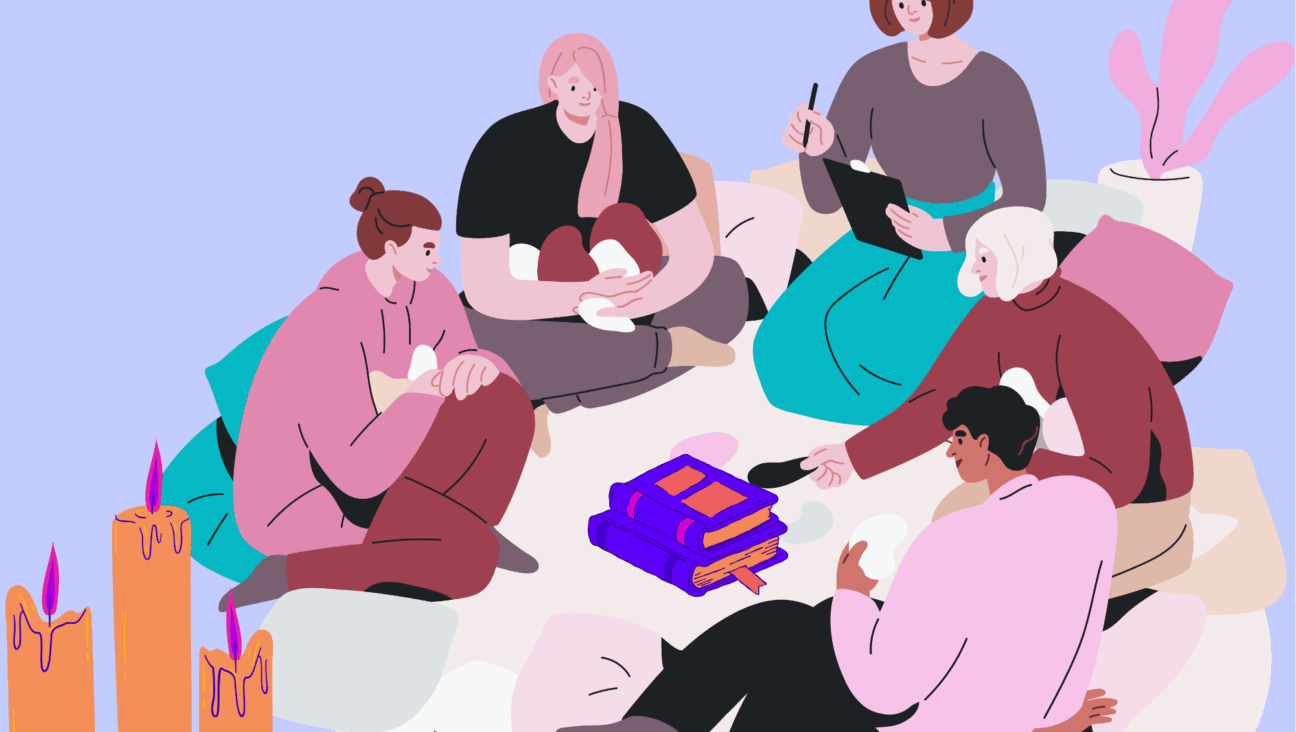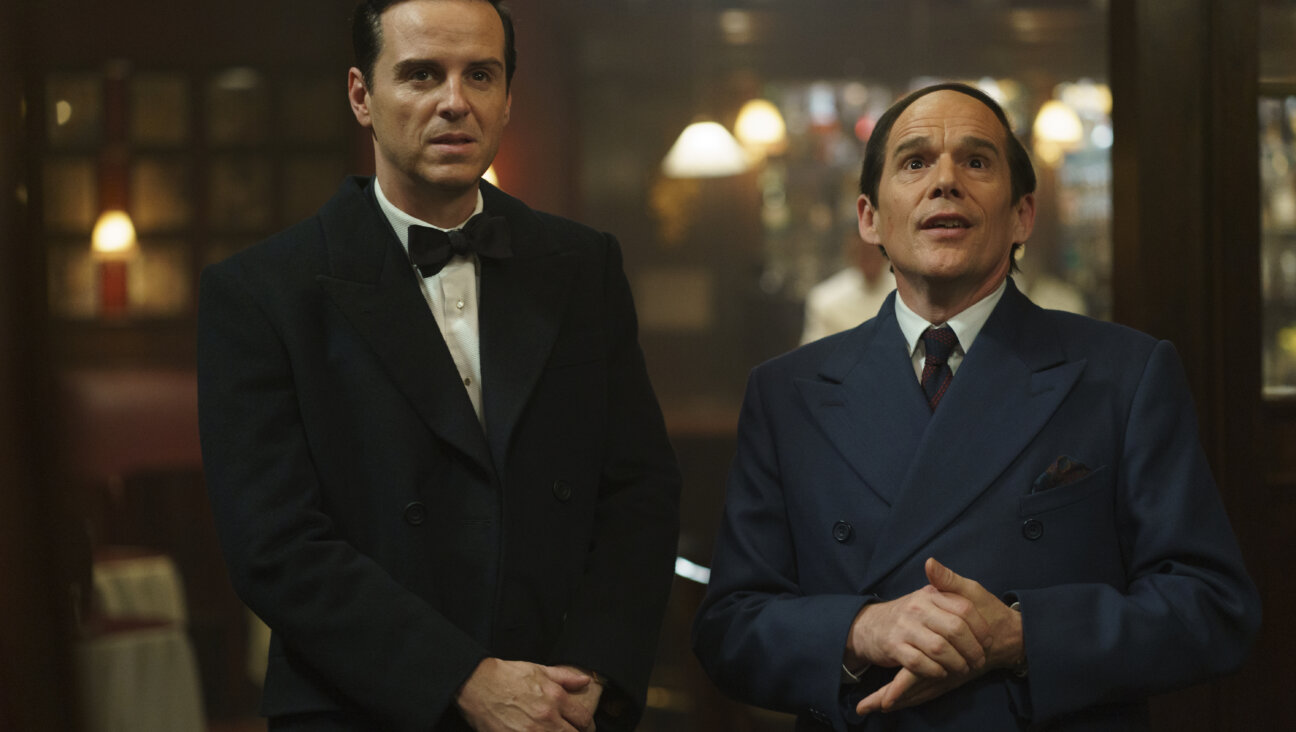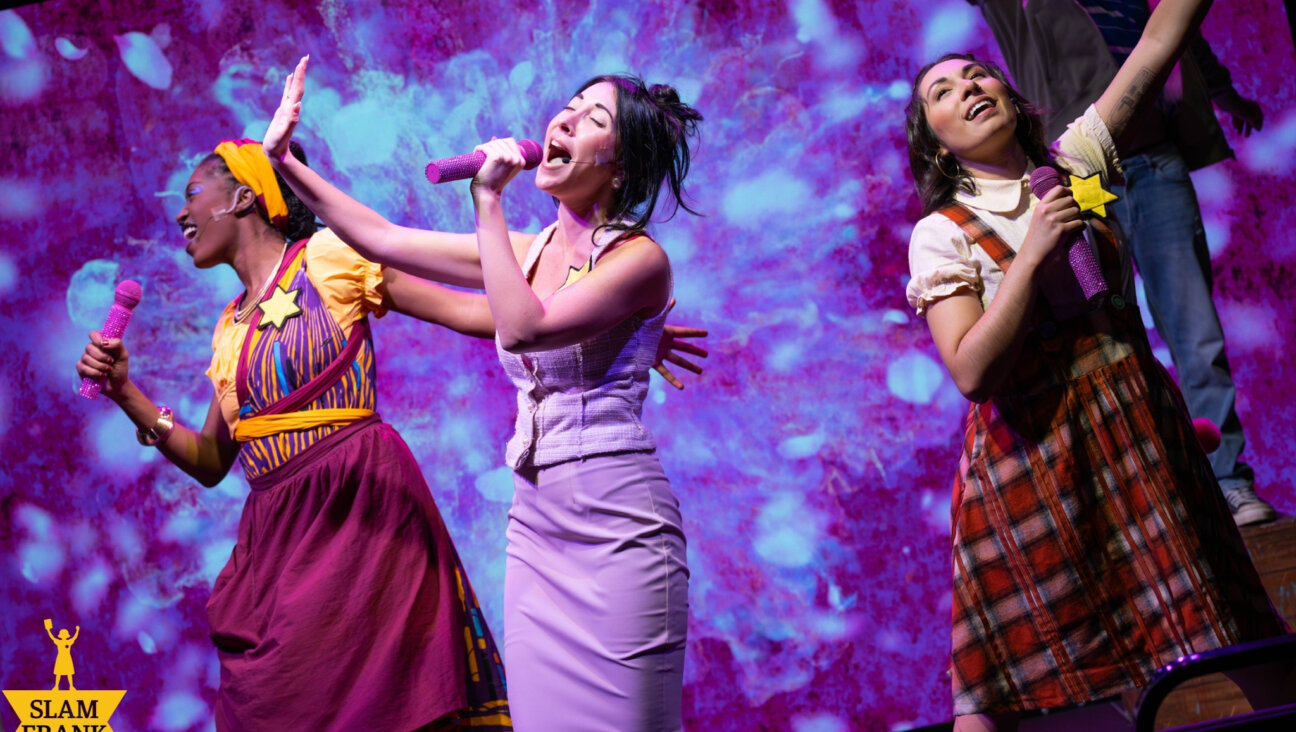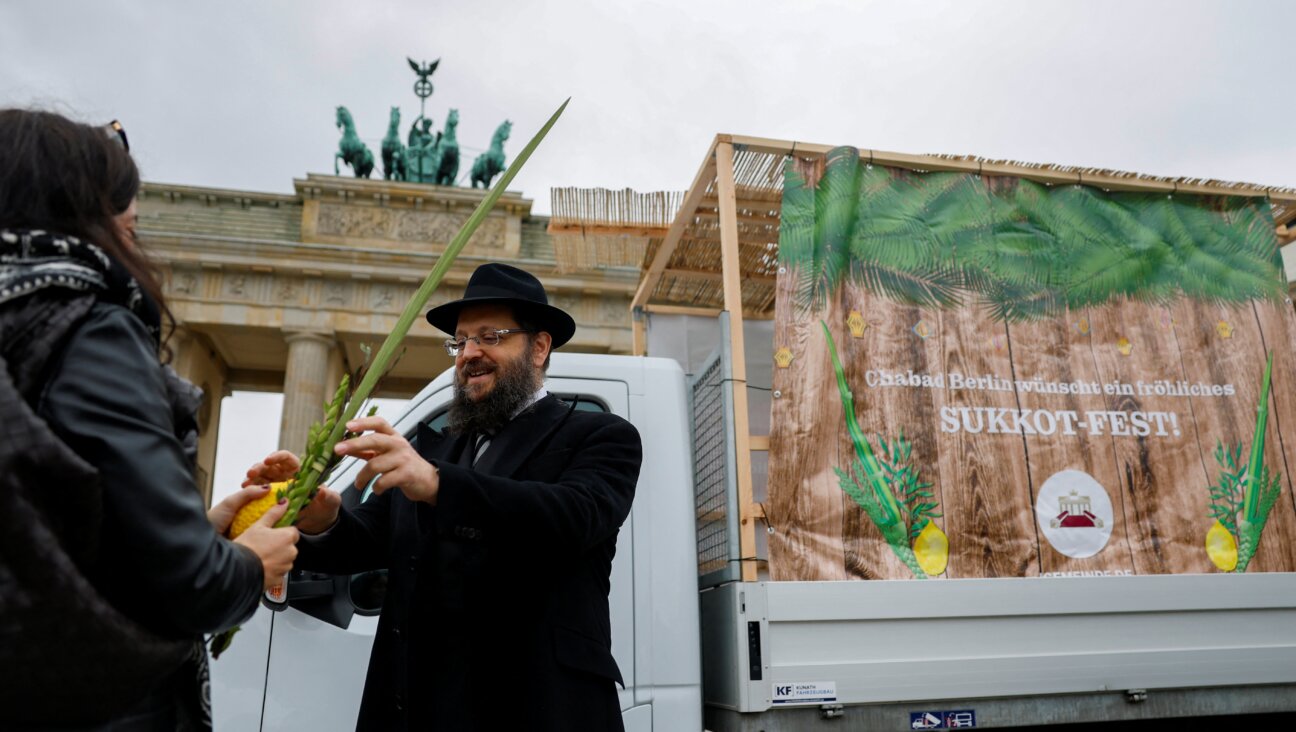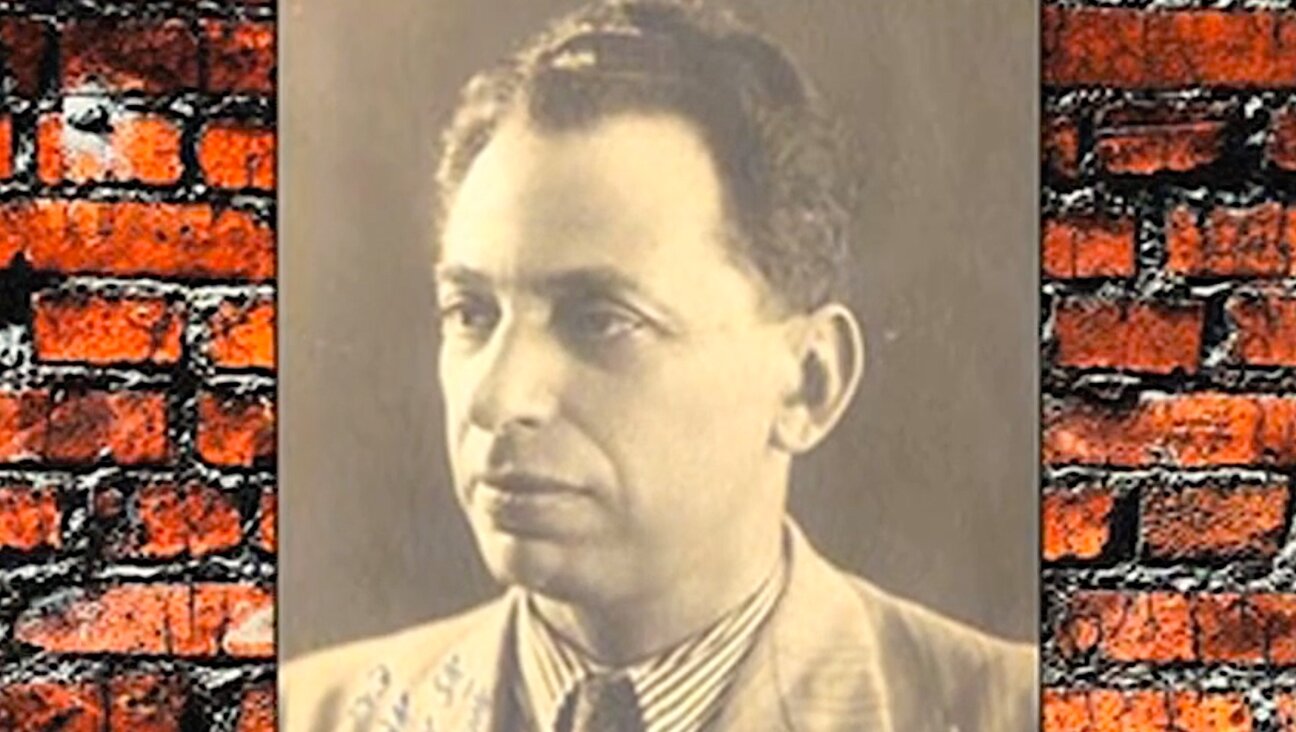The Celtic Jewish Connection

McKeown and McSklamberg: Lyrics and music merged beyond expectations. Image by COURTESY OF SUSAN MCKEOWN
Sign up for Forwarding the News, our essential morning briefing with trusted, nonpartisan news and analysis, curated by senior writer Benyamin Cohen.
You can love Irish songs, and you can love Yiddish songs. Irish chanteuse Susan McKeown and Klezmatics bandleader Lorin Sklamberg encourage you to love them both — at once. Why choose? On their CD “Saints & Tzadiks,” (World Village), out August 11, they sing Yiddish, Irish, and blends of Yiddish and Irish — highlighting the traditions’ similarities as well as the different ways each tradition tells a musical tale.
New York encourages such cultural fusions — Tin Pan Alley famously had Irish/Jewish songwriting teams (look for Mick Moloney’s CD “If It Wasn’t for the Irish and the Jews,” and its launch concert at Symphony Space in October). At the YIVO Institute for Jewish Research, where Sklamberg works as the sound archivist when not on the road, the duo explained that they had talked about doing this project for years, ever since McKeown first got a call to appear with the Klezmatics back in the ’90s. “It’s a peculiar New York thing to have a band like the Klezmatics and have two musicians in it I know from Irish sessions,” she said.
The 2006 Grammy award-winning Klezmatics CD “Wonder Wheel,” the band’s first English-language CD, put melodies to rediscovered lyrics by Woody Guthrie — and featured vocal arrangements as well as the lively instrumentals for which the band is known. McKeown sang on the CD, and it was during its production that she and Sklamberg discovered how well their voices blend together. They knew they wanted to find another project that deliberately would combine klezmer and Irish styles.
Previous attempts to marry the traditions have focused on instrumental arrangements, Sklamberg explains, like the collaboration between klezmer clarinetist Andy Statman and the Irish band De Dannan. McKeown has sung in Yiddish before, but it’s the first time that Sklamberg has attempted to sing in Irish — a difficult language. “It’s not close to anything!” he said, laughing. As Sklamberg mispronounced the same word again and again (he grumbled, “nisht ahin, nisht aher,” Yiddish for “neither here, nor there”), McKeown coached him phonetically from the booth.
On “Saints & Tzadiks,” Sklamberg’s light-bodied, Yiddish inflection adds pathos to “Oakum,” a song McKeown says she got “from Seán Garvey, who got it from the sean nós (a capella) singer Seán Ac Dhonncha.” On the Yiddish song “Fin Mayn Mamelyu Hot Men Mikh Aroysgenimen” (“They Took Me Out of My Mother’s House”), McKeown’s slightly jazzy, restrained vocals allow the emotion of the song about a girl resisting the temptation of a prostitute’s life in Argentina. And who knew there were Yiddish songs about Polish girls being lured into a life of sin?
Most of the songs on “Saints & Tzadiks” have never been commercially recorded. Sklamberg turned to the book “Yiddish Folk Songs From the Ruth Rubin Archive,” based on the researcher’s field recordings held at YIVO, to discover songs that were “not about life in the shtetl. They were about things that were gritty. It seemed to jibe with what I know about the range of Irish songs.”
Particularly striking are the songs that blend the two languages. For example, “Heart’s Blood” combines “Fort a fidele, fort aroys” and “The Cruel Brother.” McKeown and Sklamberg take lyrics from an 18th-century Child Ballad (one of the songs in the collection of traditional ballads made by 19th-century researcher Francis James Child) and a recording made of a Mrs. Efron in the Queens neighborhood Long Island City in 1953. A note on that recording says it was based on a 200-year-old German ballad. The Yiddish version is harsher: The girl is murdered in an awful way. In the English version, she has the opportunity to make a will first. “The Rattlin’ Bog” is a cumulative song about a tree in a bog (and the bird in the tree, and the feather on the bird), sung in Yiddish and Irish. “It’s the same song,” McKeown said. In the Yiddish version, the tree might suggest a kabbalistic symbol; in the Irish version, the tree may be a symbol of Ireland. The alternating lyrics and melodies create a mysterious, mystical mood — enhanced on occasion by Latin, the language of Catholicism, which is deeply ingrained in Irish culture. A haunting track titled “Prayer for the Dead” blends a Ukrainian World War I lament with the Irish 19th-century anti-war song “Johnny I Hardly Knew Ye” — followed by a sonorous Latin hymn with some lines in Irish that McKeown learned in school.
Still, the musical fusion displayed on the CD does not assign styles by heritage — deliberately. “Don’t try to sound like an Irish person,” McKeown remembered telling fiddler Jake Shulman-Ment. “People think the rhythm of Irish and klezmer are opposites, but really, both are exuberant.” In agreement, Sklamberg said: “Both have intense amounts of pride. Sometimes people think a slow or melancholy song is nostalgic, but the impulse is a fierce belief in the rightness of who you are.”
The traditions survive in different ways. In Ireland, traditional musicians often run in families, McKeown says, and they are seen as the keepers of the flame. Irish is taught in schools, but McKeown says she came out of school knowing more French than Irish. She herself is not from a traditional musical family. Of Yiddish music, Sklamberg insisted, “It’s alive!” But it was hard to ignore the fact that the interview took place in an archive.
“One of the great tragedies of Jewish history is that there hasn’t been a continuous singing tradition,” Sklamberg said, with a sigh. “When I was growing up, everybody was listening to songs from Israel.” He learned Yiddish as an adult. McKeown does not come from an Irish-speaking family. She and Sklamberg share a bit of the viewpoint of the outsider. “Both languages are not lost yet, but they’re both languages that certain members of the community are trying to hold on to and keep alive,” McKeown said. She also concedes that the histories of the Jews and the Irish have certain similarities.
“It’s the humanity of the music that comes through,” Sklamberg said, thinking about the impact the 1960s folk revival had on Jews. “You look in any suburban Jewish record collection, and you’ll find Belafonte and the Clancy Brothers,” he said. “Everybody had Theodore Bikel records, and he did some Irish songs in an Irish accent.”
“We’re one of the lost tribes,” McKeown said jokingly. “We have to do the DNA on that. It works well, the Irish and the Jewish music. It’s a good match.”
Gwen Orel is a freelance writer on theater, music and film. She has a doctorate in theater arts from the University of Pittsburgh.
